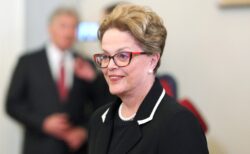By Edwin Alfred Nii Obodai PROVENCAL (Dr)
The Electricity Company of Ghana (ECG) is the primary electric power distributor in Ghana, serving as the lifeline between power generation and end-users in the economy.
Established as a state-owned utility, ECG currently distributes electricity across six populous regions in southern Ghana, including the capital Accra (energymin.gov.gh).
Together with a smaller northern distributor (NEDCo) and a minor private enclave utility, ECG forms the backbone of Ghana’s power delivery system (energymin.gov.gh).
The company’s performance is therefore critical to national development: reliable electricity supply underpins industry, commerce, and basic livelihoods, while ECG’s financial health impacts the entire energy sector.
As of 2019, Ghana had achieved electricity access for about 87% of its population (documents1.worldbank.org) – one of the highest rates in Sub-Saharan Africa – largely thanks to decades of network expansion by ECG and its partners.
However, this broad access has not been matched by efficient service. ECG has long been plagued by operational inefficiencies, high losses, and financial distress that impose heavy costs on the economy (journals.scholarpublishing.org, documents1.worldbank.org).
The term “dumsor” (Twi for “off-on”) entered the Ghanaian lexicon to describe persistent power outages in the 2010s, underscoring how central ECG’s performance is to daily life (ugspace.ug.edu.gh).
Successive governments have recognized that ECG’s underperformance threatens Ghana’s growth and fiscal stability.
The utility’s inefficiencies contribute to an expensive cycle of debt and subsidy: by one estimate, ECG’s losses and under-billing cost Ghana about $8 million per week in the mid-2010s (journals.scholarpublishing.org), forcing the government to plug revenue shortfalls with subsidies up to $160 million annually (journals.scholarpublishing.org).
These losses stem from technical issues (aging infrastructure causing power dissipation) and commercial issues (power theft and billing gaps), which together meant ECG was only collecting roughly 65% of the revenue it should (journals.scholarpublishing.org).
The economic implications are severe – unpaid power means upstream generation companies are not reimbursed, leading to accumulation of arrears (over $2.3 billion in “legacy” debts by 2019 documents1.worldbank.org) and deterring investment in the energy sector. Thus, improving ECG’s performance has been a policy priority for decades. This paper provides a comprehensive analysis of ECG’s historical evolution and the reforms attempted to address its challenges.
In particular, we examine the recent high-profile intervention – a private concession arrangement with Power Distribution Services (PDS) in 2019 – that was envisioned as a turnaround solution but ultimately collapsed.
Through an academic lens, we analyze why ECG has struggled despite reforms, what lessons emerge from the failed PDS privatization, and what options remain for securing a sustainable future for Ghana’s power distribution. We follow a structured approach: reviewing relevant literature on utility reform, detailing ECG’s institutional history and past interventions, presenting a case study of the PDS episode, and evaluating key challenges via an impact-urgency framework to inform practical policy recommendations.
Literature Review
Reforming state-owned electricity utilities has been a recurrent theme in energy economics, especially in emerging economies. The theoretical rationale for privatization or public-private partnerships (PPPs) in electricity distribution is to inject capital, efficiency, and commercial discipline into historically underperforming public monopolies (journals.scholarpublishing.org , research.manchester.ac.uk). Proponents argue that profit incentives and private management can reduce losses, improve customer service, and relieve government finances by attracting private investment (research.manchester.ac.uk).
Over the past three decades, many developing countries – often influenced by the 1980s/90s “Washington Consensus” reform agenda – have unbundled state power utilities and experimented with privatization models (research.manchester.ac.uk, ugspace.ug.edu.gh).
Reforms typically aimed to emulate competitive markets and improve governance, moving away from politicized state control to commercialized operations (the “standard reform model” research.manchester.ac.uk). In Africa, power sector privatization gained momentum in the 1990s and 2000s under structural adjustment programs and donor conditionalities, though outcomes have been mixed.
Empirical evidence from similar economies reveals both cautionary tales and some success stories. Several African countries that attempted full or partial privatization of electricity distribution have faced difficulties.
For example, Nigeria undertook a sweeping privatization of its distribution companies in 2013, but a decade on, the power supply remains unreliable and the utilities are financially weak – indicating that ownership change alone did not resolve underlying structural issues like tariffs and losses (research.manchester.ac.uk, research.manchester.ac.uk). Tanzania briefly privatized management of its utility (TANESCO) in the early 2000s, only to renationalize after the private operator underperformed (ugspace.ug.edu.gh).
Ghana’s own experience with utility PPPs outside the power sector foreshadowed potential pitfalls: a private concession for urban water in the 2000s failed to achieve its targets and was canceled amid mutual recriminations (ugspace.ug.edu.gh).
Studies note that such reversals often stem from a combination of unrealistic reform design, weak regulatory capacity, and lack of political buy-in (Bayliss, 2008; Mvulirwenande et al., 2019). These cases underscore that privatization is no panacea – and if not carefully structured, can result in “public-private fiascos” that leave the state to pick up the pieces (ugspace.ug.edu.gh).
On the other hand, there are examples where private participation contributed to improvements. Uganda’s 20-year distribution concession (Umeme, since 2005) is often cited for reducing distribution losses and expanding investment, although not without controversy over tariff levels. Rwanda successfully restructured its electricity sector by unbundling and corporatizing utilities; by focusing on loss reduction and commercial discipline, Rwanda reportedly brought system losses down and improved reliability in recent years (modernghana.com).
Kenya has taken a hybrid approach with its main utility (Kenya Power) – it remains majority government-owned but is publicly listed and has engaged private partners in certain service areas. This model has led to some efficiency gains: for instance, Kenya leveraged private-sector techniques to deploy prepaid meters and curb theft, helping to modestly cut losses and modernize infrastructure (modernghana.com).
Such international experiences suggest that the context and implementation matter greatly. A key lesson is that governance and regulatory conditions largely determine outcomes: where institutions are strong and contracts enforced, private operators can thrive; but in environments with political interference and weak oversight, privatization may simply replace one set of problems with another (research.manchester.ac.uk).
Ghana’s power sector reforms have been influenced by this global discourse. Starting in the 1990s, policies were oriented toward commercialization and private sector involvement.
The creation of an independent regulator (PURC) in 1997 and the unbundling of transmission (GRIDCo in 2006) mirrored international best practices (energymin.gov.gh). By the 2010s, private participation in ECG via a concession was promoted by external partners – notably the U.S. Millennium Challenge Corporation – as a way to bring new capital and expertise (journals.scholarpublishing.org). However, analysts have warned that Ghana’s intense political competition and patronage networks could derail such reforms (research.manchester.ac.uk).
A policy brief on Ghana’s electricity political economy argues that conventional reform prescriptions often fail to account for informal political incentives, such as the temptation for ruling parties to use energy contracts to reward loyalists or to defer tariff hikes for electoral gain (research.manchester.ac.uk).
In Ghana’s context, private concessions might even introduce new rent-seeking opportunities – for example, through contract awards to politically connected firms – unless transparency is rigorously enforced (research.manchester.ac.uk). This literature highlights the paradox that plagues Ghana and many similar democracies: while reform is needed to improve utility performance, the very governance weaknesses that necessitate reform can also undermine it.
In summary, existing scholarship and policy analyses suggest that any attempt to fix ECG must integrate lessons from past reform efforts.
These include: ensuring stakeholder buy-in (especially from labor unions and consumers) to avoid resistance, strengthening regulatory institutions to hold whichever entity (public or private) accountable, and addressing fundamental issues like cost-reflective pricing and corporate governance.
The failed Ghanaian experiments in water privatization and the mixed record of power sector PPPs abroad serve as a caution – echoing the sentiment that “policy failure and failure to learn from past failures” is a recurring challenge (ugspace.ug.edu.gh). This paper builds on this literature by examining how those dynamics played out in ECG’s case, particularly with the PDS concession, and what can be learned for future policy design.
Methodology
This study adopts a qualitative case study approach, combining historical analysis with policy evaluation. The research design is mixed-methods in that it draws on both qualitative document review and quantitative secondary data to triangulate findings.
The core method is documentary analysis: we reviewed a wide range of materials including official government reports, regulatory filings, company annual reports, independent audit findings, and news archives.
Key sources were policy documents like Ghana’s Energy Sector Recovery Program (2019) (documents1.worldbank.org), the Millennium Challenge Corporation (MCC) Ghana Compact reports, and statements from oversight bodies (e.g. the Public Utilities Regulatory Commission).
We also analyzed academic papers and think-tank studies focusing on ECG and Ghana’s power sector (such as the CGD policy paper by Kumi (2017) and recent political economy analyses (research.manchester.ac.uk, modernghana.com). These provided context on performance indicators and institutional factors.
For quantitative insights, we compiled secondary data on ECG’s performance metrics over time. This included indicators such as aggregate technical and commercial loss rates (% of power lost or unaccounted), revenue collection rates, financial outcomes (profit/loss, debt levels), and service reliability metrics where available.
For instance, we used published data that ECG’s total distribution losses hovered around 21% in 2018 (purc.com.gh) and climbed to roughly 25% by 2019 (documents1.worldbank.org), while revenue collection improved to about 90% in 2019 (documents1.worldbank.org). We also noted external assessments such as the MCC’s stipulated Key Performance Indicators (KPIs) for the PDS concession (e.g. loss reduction targets, investment commitments), and any recorded outcomes against those benchmarks.
When quantitative data from official sources was limited (for example, detailed KPI results during the short PDS period), we relied on proximate indicators reported in media and oversight statements (e.g. interim progress reports, if any).
Our analysis is structured into thematic sections reflecting both chronology and topical focus. In the historical evolution section, we chronicle ECG’s institutional trajectory and reform measures by successive governments, drawing on archival records and prior studies.
The case study section zooms into the 2019 PDS concession episode, using a narrative reconstruction from contract documents, government statements, and investigative reports (including the MCC’s post-termination report (assets.mcc.gov) and a local think-tank’s analysis of the concession’s failure (acep.africa).
We then apply a challenge prioritization framework to categorize the myriad problems identified, using an impact-versus-urgency matrix informed by qualitative judgment and data on severity.
Each major challenge (technical losses, financial viability, governance, infrastructure, regulatory environment) is assessed for its impact on ECG’s performance and the urgency with which it needs to be addressed, supported by evidence from the document review. This framework is presented in a table format for clarity.
Finally, in deriving recommendations, we synthesize insights from the case and comparative literature, aiming for actionable strategies. Throughout, we maintain an academic rigor by cross-verifying facts and citing sources.
The combination of historical narrative, case study evidence, and analytical evaluation is intended to provide a comprehensive understanding of ECG’s challenges and the way forward.
Historical Evolution and Policy Interventions
Origins and Early Structure: The Electricity Company of Ghana traces its roots to the colonial era. Public electricity supply began in the 1910s-1920s in a few towns, managed by colonial departments(ide.go.jp).
ECG as an entity was formally established in 1967 under the National Liberation Council Decree (NLCD 125), consolidating earlier regional electricity undertakings into a single national distributor (ide.go.jp).
Throughout the 1970s and 1980s, ECG functioned as a state monopoly responsible for electricity distribution across Ghana (ide.go.jp). In 1987, a significant change occurred: the northern half of its operations was carved out to form the Northern Electricity Department under VRA – later becoming NEDCo in 1997 (energymin.gov.gh).
This left ECG focused on the more densely populated south (where the majority of demand resides) – a role it continues today (energymin.gov.gh). The late 1980s and 1990s were a period of broader economic reforms in Ghana, and ECG was not exempt.
Under pressure to improve efficiency, ECG underwent corporatization: in 1997 it was legally incorporated as a limited liability company, issuing shares (held by the government) and ostensibly operating under company law rather than as a civil service branch (journals.scholarpublishing.org). This move was aimed at preparing ECG for commercial principles and even partial privatization, aligning with public enterprise reform trends of the time.
Regulatory and Structural Reforms: The 1990s also saw the creation of regulatory bodies to introduce checks on ECG’s performance.
The Public Utilities Regulatory Commission (PURC) was established by 1997 as an independent regulator to set tariffs and enforce service standards, while an Energy Commission was set up to oversee licensing and planning (gna.org.gh). These institutions were meant to reduce direct political control and create a rules-based environment.
Nonetheless, in practice, government influence remained strong – the President continued to appoint ECG’s board and executives, and tariff decisions were often politically sensitive (documents1.worldbank.org).
In the early 2000s, Ghana pursued power sector unbundling under a standard reform model: generation was opened to Independent Power Producers (IPPs), transmission was separated by forming GRIDCo in 2006 (energymin.gov.gh), and distribution stayed with ECG/NEDCo.
Despite these reforms, chronic problems persisted: by the mid-2000s, ECG’s distribution network was suffering from under-investment, frequent breakdowns, and mounting commercial losses (power theft, illegal connections).
Ghana experienced severe power supply crises in 2007 and again in 2012-2015 (the “dumsor” period), which, while largely caused by generation shortfalls and fuel supply issues, were exacerbated by ECG’s inability to effectively manage load and demand.
Government Interventions: Successive governments implemented various initiatives to tackle ECG’s inefficiencies. Under President Kufuor (early 2000s), there were attempts to improve management through short-term management contracts and performance targets, but these yielded modest gains.
A notable intervention was the introduction of prepaid metering on a larger scale, aiming to improve revenue collection. Prepaid meters were gradually rolled out to many customer categories through the 2000s and 2010s, which did help enforce payment discipline and reduce arrears from consumers. However, systemic issues like losses remained high.
By 2014, ECG’s technical and commercial losses were estimated at about 24% of energy supply (thenewcrusadingguideonline.com) – significantly above international best practice (10-15%).
That year proved pivotal as Ghana negotiated the Millennium Challenge Compact (MCC) – Compact II, a US-funded $498 million program largely targeted at transforming ECG.
The Compact, signed in 2014, explicitly conditioned funding on Ghana bringing in a private sector partner to manage ECG’s distribution business (journals.scholarpublishing.org).
This reflected a policy consensus at the time that traditional turnaround efforts had failed and only a major private concession could shake up ECG’s performance.
From 2014 to 2016 (under President Mahama’s administration), groundwork was laid for this private-sector participation (PSP) in ECG. The Millennium Development Authority (MiDA), a Ghanian entity overseeing MCC projects, led the design of the ECG concession and engaged advisors to structure the deal (journals.scholarpublishing.org).
Stakeholder consultations were held, but the process faced resistance – notably from ECG’s employee union and some civil society groups, who feared job losses and higher tariffs. To address labor concerns, the plan guaranteed retention of all ECG employees for at least 5 years under the new operator (journals.scholarpublishing.org).
The concession model chosen was a 20-year lease: the private operator would take over ECG’s operations and invest in the network, while the state would retain ownership of assets. The government would hold a 51% stake in the entity and the private concessionaire 49%, reflecting a joint venture approach (journals.scholarpublishing.org).
By the time President Akufo-Addo took office in 2017, the concession plan was in advanced stages, and his government continued it with some revisions (notably, ensuring greater local ownership in the private consortium).
Performance Prior to the Concession: On the eve of the PDS concession in 2018, ECG’s status remained troubled. The company’s own financial statements showed consistent losses – for example, a net loss of GHS 2.5 billion in 2019, worsening from 2018 (ecg.com.gh).
Operational indicators were stagnant or declining: total distribution losses were around 21-25% in recent years (documents1.worldbank.org), far above the regulatory benchmark of 15% and effectively meaning a quarter of electricity procured was not paid for. Collection efficiency, while improved by prepaid meters, hovered around 90%, implying 10% of billed revenue went uncollected (documents1.worldbank.org).
Additionally, ECG’s debt to power producers had ballooned; by 2018-2019, ECG owed over $1 billion to independent generators and fuel suppliers, prompting warnings of potential supply cuts (modernghana.com). To alleviate this, the government launched an Energy Sector Levy (ESLA) bond program in 2017 to refinance legacy debts, and an Energy Sector Recovery Plan in 2019 to curb new arrears (documents1.worldbank.org).
While these measures provided temporary fiscal relief, they did not fundamentally fix ECG’s internal inefficiencies. It was against this backdrop that the PDS concession was finalized in 2019 – an ambitious policy intervention meant to finally turn ECG around by transferring its management to a private operator with performance targets and investment obligations.
Case Study – PDS Concession (2019)
Concession Framework and Goals: The Power Distribution Services (PDS) Ghana Ltd. concession was the culmination of the MCC-driven reform.
After an international tender, PDS – a consortium of Ghanaian firms with a minority foreign technical partner (the Manila Electric Company, Meralco, from the Philippines) – was selected to take over ECG’s operations.
The concession agreement, signed in 2018, became effective on March 1, 2019, when PDS assumed control of ECG’s distribution network, staff, and customer services (gh.usembassy.gov).
The key goals of the PDS concession were codified in a set of KPIs and investment commitments. Broadly, PDS was tasked to reduce system losses, improve collection rates, expand access, and upgrade infrastructure within clear timelines.
For example, it was expected to inject hundreds of millions of dollars into network upgrades over the first five years and cut the aggregate technical and commercial losses by a few percentage points from the baseline (reports suggested a target loss reduction to ~20% or lower in the medium term journals.scholarpublishing.org).
PDS also had to maintain service quality standards and was subject to financial penalties or eventual termination if it failed to meet performance thresholds.
To secure its obligations, PDS provided a transaction security – notably a demand guarantee meant to protect the government (ECG) in case PDS defaulted on lease payments or performance.
Initial Implementation: For the first few months after March 2019, PDS took over operations relatively smoothly on the surface.
ECG’s employees were transferred to PDS management (with their jobs and conditions preserved per the agreement), and the company began branding operations under the PDS name. Some early actions included efforts to improve revenue collection – PDS continued the deployment of prepaid meters and embarked on audits of big consumers to detect meter tampering.
However, the time was too short to see any significant change in technical performance or investment on the ground. Internally, PDS was still mobilizing financing for the required investments. A portion of the MCC compact funds (~$190 million) was earmarked to support the turnaround during the early phase, contingent on the concession remaining in place (citinewsroom.com).
Notably, customers and the public saw little immediate difference; tariffs and billing continued as set by PURC, and any major network improvements were yet to commence. The concession was still in a transition phase when it hit an unexpected crisis by mid-2019.
Due Diligence and Guarantee Dispute: In July 2019, just four months into the concession, the Government of Ghana announced it had detected “fundamental and material breaches” in PDS’s obligation, specifically regarding the validity of the demand guarantee PDS had provided.
The guarantee – essentially an insurance-backed security from a Qatari reinsurance firm (Al Koot) via local partners – was intended to assure about $350 million in case of default. Ghanaian authorities claimed they discovered the guarantee document was faulty or fraudulent, as the supposed reinsurer (Al Koot) denied authorization of the instrument (acep.africa).
This revelation prompted the government on July 30, 2019 to suspend the concession pending investigation (assets.mcc.gov). Overnight, ECG’s assets and operations were effectively taken back from PDS and placed under interim control of ECG’s management. The situation became a standoff. MiDA (the transaction overseer) hired an independent forensic auditor (FTI Consulting) to investigate the guarantee issue.
The FTI audit report concluded that while there were lapses, there was no intentional fraud by PDS – essentially, PDS may have been negligent but did not willfully present a fake guarantee (assets.mcc.gov). The U.S. MCC, backing this audit, maintained that the government should reinstate PDS and continue the concession (assets.mcc.gov).
However, the Government of Ghana’s own team stood by their assessment that the guarantee was invalid and that this posed unacceptable risk to ECG’s assets (acep.africa). They argued that proper due diligence had not been done by MiDA and its advisors before transfer, allowing PDS to assume control with insufficient security (acep.africa).
This pointed to a failure of oversight in the transaction closing process – essentially a procedural flaw that became a deal-breaker.
Termination and Aftermath: After a tense few months of deliberation, the Government of Ghana officially terminated the PDS concession on October 19, 2019 (assets.mcc.gov).
ECG was fully reverted to state control, and PDS’s short-lived role ended in a fiasco. The termination had significant consequences. Firstly, Ghana forfeited the remaining $190 million of the MCC grant, as MCC declared Ghana to have materially breached the compact by cancelling the private sector participation condition (africa-energy.com, citinewsroom.com).
The U.S. embassy and MCC expressed disappointment, implying that Ghana had walked away from a vital reformassets.mcc.gov. Domestically, reactions were mixed. The ECG workers’ union and some skeptics of the concession felt vindicated by the cancellation, seeing it as protection of a strategic asset from an unproven private entity.
Yet many in the policy community saw it as a major setback for power sector reform and a blow to investor confidence. The government defended its action as necessary to “protect the assets of ECG” given the faulty guarantee (acep.africa), emphasizing that it was open to exploring a corrected form of private partnership in the future. PDS, for its part, protested the termination and insisted it had acted in good faith, but ultimately had to wind up its operations.
Analyzing why the PDS concession failed reveals a combination of technical, procedural, and political factors. The immediate trigger was the guarantee saga – essentially a contractual risk mitigation tool that became a point of contention.
The independent audit vs. government inquiry came to opposite conclusions on the validity of the guarantee, highlighting ambiguity and perhaps a lack of communication between parties (acep.africa).
The crux was that a junior Al Koot employee had apparently signed off on the instrument without full authority, which the Ghanaian side viewed as invalid, whereas PDS/MCC believed a “cut-through” clause still made the guarantee callable (acep.africa). This technical dispute might have been resolved through negotiation, but broader political economy currents influenced the outcome.
Some observers noted an underlying lack of trust and differing expectations: the new Ghanaian administration may have been less enthusiastic about a deal structured under the previous government, and domestic political pressures (including vocal opposition to the concession and concerns about national sovereignty over ECG) made the government unwilling to be seen as yielding to foreign insistence.
Furthermore, questions arose as to how PDS – a newly formed local consortium – was chosen and whether they had the financial capacity to perform. Allegations (though not officially confirmed) circulated that certain powerful interests stood to gain from PDS, raising concerns of elite capture of the privatization process.
Ultimately, whatever the hidden causes, the official reason remained the guarantee issue, and with that pretext the concession was voided.
Evaluation against Expectations: Because PDS’s tenure was so brief, it is difficult to evaluate its performance against the lofty goals set out. In terms of investments, PDS did not get far enough to inject the promised capital; the network saw no major improvement in those months.
For operational KPIs like losses and collections, no meaningful change occurred in the short period – ECG’s aggregate losses in 2019 still stood around 25% (documents1.worldbank.org), and collection rates around 90%, essentially unchanged. What the PDS case did highlight was the importance of thorough due diligence and strong regulatory oversight in PPP arrangements.
The fact that a basic contractual guarantee could unravel the entire deal suggests that risk management mechanisms were not robust. It also reflects a misalignment of priorities: while the MCC and reformers were focused on efficiency gains and long-term benefits, the government’s immediate concern shifted to legal/financial risk protection when a red flag arose. In sum, the PDS concession failed not due to on-the-ground operations or public backlash at that moment, but due to a collapse of institutional process and trust.
This case has since been scrutinized in Ghana as a classic example of how not to execute a privatization. The lessons from it extend beyond the technicalities, touching on issues of institutional capacity, political will, and stakeholder engagement, which we explore in the discussion section.
Challenge Prioritization Framework
ECG’s myriad challenges can be grouped into key categories: technical losses, financial distress, governance and management, infrastructure deficits, and regulatory/political issues.
To strategize reforms, it is useful to prioritize these challenges by impact (significance of the issue’s effect on ECG’s performance and the wider power sector) and urgency (how immediate and critical the issue is to resolve).
Table 1 presents a prioritization matrix that classifies ECG’s challenges into High/Medium/Low Impact vs. High/Medium/Low Urgency, based on the evidence gathered.
Table 1. Prioritization of ECG’s Challenges by Impact and Urgency
| Challenge | Impact | Urgency | Notes |
| Financial Distress & Debt | High | High | Severe cash shortfalls (~$1.3 billion annual sector deficit documents1.worldbank.org) threaten generators and continuous supply. Immediate actions needed to avoid blackouts and insolvency. |
| Regulatory/Tariff Issues | High | High | Below-cost tariffs and political interference create recurring revenue gaps (documents1.worldbank.org). Urgent to implement cost-reflective tariffs or subsidies, as yearly shortfalls cost ~1–2% of GDP (documents1.worldbank.org). |
| Technical & Commercial Losses | High | Medium | Losses ~30% of energy as of 2023 (modernghana.com) cause massive revenue leakage. High impact on finances; requires a concerted loss-reduction program, though improvements will materialize over medium term rather than overnight. |
| Governance & Institutional Capacity | High | Medium | Political appointments and weak accountability hamper long-term performance (documents1.worldbank.org). High impact (root cause of inefficiencies), but reforms (e.g. corporate governance changes) take time – important to start now for lasting change. |
| Infrastructure & Maintenance | Medium | Medium | Aging distribution infrastructure leads to frequent outages and constraints to connect new customers. Moderate impact on reliability and customer satisfaction; medium urgency since it requires capital investment phased over years. |
| Stakeholder Trust & Labor Issues | Medium | Medium | Employee morale and public trust in ECG are moderate issues – they affect implementation of reforms (e.g. resistance to privatization). Need to be managed concurrently with other changes to ensure cooperation. |
| IT Systems and Customer Service | Low | Low | While billing system glitches and customer service complaints are notable (modernghana.com), they are less impactful than core technical/financial problems. Can be addressed in due course once higher-priority issues are under control. |
From the above, two clusters emerge as top priorities: financial viability and sector governance. Financial distress, exacerbated by regulatory shortcomings, stands out as the most acute crisis – without money to pay power producers or maintain the network, the system could collapse in the short term.
Thus, measures to improve ECG’s cashflow (through tariffs, collections, or government support) are of highest urgency. In parallel, technical losses and infrastructure weaknesses represent the engineering challenges that, if solved, yield significant long-term benefits to ECG’s finances and service quality (hence high impact), but these require sustained efforts (medium urgency).
Governance problems, including management inefficiency and political interference, are harder to quantify yet deeply intertwined with all other issues. These are high-impact insofar as poor governance perpetuates losses and financial mismanagement.
However, governance reforms (changing corporate culture, insulating the utility from patronage) often face political inertia, so their effects are medium-term – they are urgent to initiate but will not show results as rapidly as, say, a tariff adjustment.
It is worth noting how these challenges reinforce one another. For instance, persistent technical losses and uncollected bills drive financial losses, which in turn leave ECG unable to invest in better infrastructure, leading to further technical losses – a vicious cycle.
Similarly, political interference in tariff setting (e.g. a decision to freeze or cut rates before an election) directly contributes to financial shortfalls (gna.org.gh, gbcghanaonline.com).
Any reform strategy must therefore be comprehensive, tackling multiple challenges in concert. The prioritization helps sequence actions – e.g. stabilize finances and enforce accountability as a foundation, then invest in infrastructure upgrades – but a holistic approach is required to break the cycle of underperformance.
Discussion and Lessons Learned
The trajectory of ECG and the outcome of the PDS concession provide rich lessons about the interplay of technical and political factors in utility reform. Several key themes emerge:
Institutional Capacity and Due Diligence: The PDS case underscored critical gaps in institutional capacity. A major international concession deal fell apart over a basic contractual instrument – the demand guarantee – pointing to inadequate due diligence and risk management by the authorities and advisors. MiDA and its transaction advisors (including IFC and Hunton & Williams) did not fully verify the authenticity of the guarantee prior to handover (acep.africa).
This lapse suggests that even with international expertise, oversight can fail without a culture of meticulous accountability. It raises questions about whether ECG, MiDA, and the ministries had the requisite skills and safeguards to manage a complex PPP.
For future interventions, building local capacity to negotiate and monitor contracts is essential. External audits (like the FTI report) are valuable, but they cannot substitute for strong internal mechanisms.
Had the guarantee issue been caught in time (or a more secure form of security like a bank guarantee used), the concession might have had a fighting chance. Thus, one lesson is that transaction design matters – all parties must rigorously vet contractual obligations to avoid giving either side a reason to withdraw.
Political Economy and Stakeholder Management: ECG’s history shows that politics is never far from the surface. The literature on Ghana’s electricity sector repeatedly emphasizes political economy constraints, such as short-term electoral pressures and patronage networks, which shape outcomes (research.manchester.ac.uk).
In ECG’s case, these manifested in various ways. For years, tariffs were often set not solely by economic logic but by political calculus – governments have at times delayed needed tariff increases, or even directed tariff reductions (as happened in 2018), earning public favor at the cost of utility finances (gna.org.gh, gbcghanaonline.com).
This tendency undermined PURC’s authority and left ECG under-compensated, contributing to the debt spiral. Additionally, the appointment of ECG’s leadership has traditionally been a political spoil: each change in government often comes with a purge of management and board members to install affiliates of the ruling party (documents1.worldbank.org).
This lack of continuity and merit-based appointments erodes organizational effectiveness and morale. Frequent leadership changes disrupt long-term planning and can reverse previous gains.
The PDS episode added a new dimension to the political economy story. The concession itself was a product of external influence (MCC conditions) intersecting with domestic politics. It faced pushback from powerful local groups – notably ECG’s union and sections of the public wary of foreign involvement in a national asset.
The government, even while pursuing the concession, had to walk a fine line to maintain public support. Ultimately, when the guarantee controversy arose, domestic political incentives likely tilted in favor of termination: the government could portray itself as protecting national interests from a potentially dubious foreign deal, a stance palatable to skeptics of privatization. The fallout illustrates the importance of stakeholder management.
A reform as significant as privatizing a major utility requires broad consensus or at least acquiescence. In Ghana, it appears that consensus was fragile. The MCC and reform technocrats were convinced of the concession’s merits, but many Ghanaians remained unconvinced or uninformed of long-term benefits. In such an environment, any stumble (like the guarantee issue) quickly eroded legitimacy.
The lesson is that reforms must be not only technically sound but also politically and socially savvy: transparency in communication, inclusion of labor and consumer voices, and perhaps a phased approach could have mitigated resistance.
Regulatory and Contractual Frameworks: Another lesson drawn is about the regulatory framework underpinning utility performance. Even the best-designed PPP will falter if the surrounding regulatory environment is weak.
In Ghana, although PURC exists as a regulator, its enforcement of performance standards and financial viability has been limited. For example, ECG routinely failed to meet loss-reduction targets or reliability standards yet faced little consequence beyond occasional admonishment. When PDS took over, it was supposed to be under stricter oversight, but the premature termination prevented testing that.
Going forward, whether ECG remains public or another private partner is engaged, strengthening regulatory oversight is crucial. This includes more regular performance audits, public reporting of key metrics, and enforcement of penalties or incentives for meeting targets.
The PDS contract did include penalties for under-performance, but ironically it was a non-performance issue (guarantee) that triggered enforcement. Ensuring regulatory credibility and fairness will also encourage private investor interest in the future – investors need assurance that rules won’t be arbitrarily changed and that they can recoup investments if they meet obligations.
The PDS case also highlights the need to clarify the role of various institutions in such partnerships. There seemed to be a coordination gap between MiDA (implementing the Compact and deal) and the line Ministry/ECG. Once PDS took over, ECG was to become essentially an asset holding company with a monitoring role, but in the heat of the crisis, ECG (the state side) jumped in to question the guarantee validity (acep.africa).
A clear governance structure for contract management – possibly an independent asset holding authority – might prevent conflicts of interest and ensure impartial handling of disputes. Countries with successful concessions often have a dedicated contract management team or unit insulated from political pressures.
Comparing with International Experiences: International comparisons shed light on Ghana’s experience.
For instance, Uganda’s concession with Umeme, while different in context, underscores the value of mid-course corrections: Uganda’s regulator renegotiated the concession terms a few years in to adjust investment and loss-reduction targets, rather than cancel outright, which allowed the concession to continue and gradually improve the network.
Ghana might draw from that by considering renegotiation as a tool in future PPPs instead of immediate termination when issues arise.
Nigeria’s struggles with privatized DisCos echo Ghana’s situation in many ways – losses remained high and government had to inject bailout funds, largely because deeper issues (like energy theft, tariff shortfalls, and governance) were not solved by simply changing ownership. Both show that private ownership must be accompanied by solving structural problems, otherwise failure is likely.
Conversely, smaller-scale PPPs (like Kenya’s outsourcing of certain services or India’s franchising of distribution circles) demonstrate that incremental approaches can yield gains without full transfer of ownership, which might be more politically acceptable in some cases.
Sustainability of Reforms and Policy Continuity: A broader lesson is the importance of policy continuity beyond election cycles. ECG has been subject to reform initiatives under different governments, but often with discontinuity.
The MCC compact spanned two administrations, and although the second administration continued it, any wavering commitment can derail progress. Sustainable improvement in the power sector typically requires a horizon longer than a single political term (5+ years). Mechanisms to lock-in reforms – such as legislation, or independent authorities – might help depoliticize the process.
The Energy Sector Recovery Program (ESRP) adopted in 2019 was an attempt to create a medium-term roadmap for financial viability. Ensuring that such plans are adhered to regardless of political shifts is key.
Additionally, maintaining institutional memory within ECG (so that best practices and lessons are not lost when leadership changes) is vital. This could involve stronger professionalization of ECG’s management cadre and shielding technical operations from politicization.
In summary, the downfall of the PDS concession in Ghana revealed that successful power sector reform is as much about managing political and institutional realities as it is about technical fixes. While the idea of leveraging private sector efficiency is sound, its execution must align with local context.
The Ghana case teaches that reforms imposed or hurried due to external timelines (like the MCC compact’s schedule) can falter if local ownership is weak. It also shows the need for robust preparatory work – legally, financially, and in stakeholder engagement – before a major concession.
The overarching lesson is that governance is central: without improving the governance of the sector (transparency, accountability, rule enforcement), neither public nor private management will yield the desired results. Any future attempts to reform ECG must integrate these lessons to avoid repeating the cycle of failure.
Policy Recommendations and Way Forward
Drawing on the above analysis, this section outlines actionable recommendations to address ECG’s challenges. The recommendations balance options of further privatization with internal restructuring and emphasize creating conditions for success. They are organized by priority area:
Strengthen Financial Viability Immediately: The government and regulator must take urgent steps to close ECG’s revenue gap. This involves making tariffs cost-reflective in a gradual, transparent manner. PURC should be empowered to implement small, frequent tariff adjustments that reflect changes in generation costs and inflation, rather than allowing large deficits to build up.
If full cost-reflectivity for some consumer categories (e.g. lifeline residential users) is socially difficult, the government should explicitly budget for subsidies and pay them directly to ECG to avoid hidden deficits (documents1.worldbank.org.)
In parallel, ECG should aggressively improve collections – e.g. expand prepaid metering to all government institutions and big businesses (no exemptions) so that the notorious problem of public sector arrears is solved (modernghana.com).
A “collection campaign” can be initiated, leveraging mobile money and digital payments to make it easy for customers to pay and hard to avoid payment (currently in place as at 2023). Revenue from improved collections and tariff adjustments can be partly used to service ECG’s debts to IPPs, easing the immediate financial crunch.
Corporate Governance Reforms: It is critical to depoliticize and professionalize ECG’s governance.
The government should consider implementing a merit-based appointment process for ECG’s management, perhaps with independent experts on the board (e.g. from the financial or engineering sectors) rather than only political appointees.
One model is to set up an independent Public Utilities Holding Company which manages state interests in ECG and other utilities, operating at arm’s length from day-to-day politics (somewhat akin to Singapore’s Temasek model for SOEs). Within ECG, instill a performance-based culture: set clear targets for managers (loss reduction, collection, outage frequency) and hold them accountable with performance contracts.
If targets are missed without valid reason, there should be consequences (reassignments or removals), which sends a message of accountability.
Training and capacity-building should be ramped up – for instance, partnering with successful utilities elsewhere in Africa for staff exchange programs, to learn best practices in distribution operations.
The aim is to make ECG operate with private-sector efficiency even under public ownership. Enhancing internal audit and compliance units within ECG will also ensure financial discipline and reduce opportunities for graft.
Revisit Private Sector Participation (PSP) with Caution: Privatization remains a potential tool, but the approach must be recalibrated post-PDS.
Rather than a full concession at once, Ghana could explore incremental PSP models. One approach is to use management contracts – hire an experienced utility operator (through competitive bidding) to manage ECG for a 3-5 year term, with fees tied to performance improvements.
This carries lower risk than a long concession and can build local capacity. Another approach is to unbundle ECG regionally and pilot private concessions in one region (for example, concession out the operations in a specific region or city where losses are highest) while keeping the rest under ECG.
This pilot can demonstrate whether a private operator can truly outperform and also mitigates the all-or-nothing risk (modernghana.com). Any future PSP must incorporate the lessons of PDS: insist on credible investors with proven track records, conduct exhaustive due diligence on all financial guarantees, and ensure key stakeholders (employees, consumers) are consulted early to gain buy-in.
If a concession or similar PPP is tried again, the government might negotiate a minority equity stake for the private operator (rather than majority) if political acceptability demands it, though this might reduce the operator’s autonomy.
Alternatively, public listing of a minority stake of ECG on the stock exchange could be pursued – this injects private capital and imposes disclosure requirements and market discipline, without ceding control entirely. For example, Kenya Power is 49% privately held via the stock market, which has helped improve transparency.
Aggressive Loss Reduction Program: Whether under public or private management, tackling technical and commercial losses is paramount. A dedicated Loss Reduction Task Force should be established within ECG (or jointly with any partner).
This task force would implement: (a) Network upgrades – replace old conductors, transformers and meters in areas with highest losses (guided by an audit to pinpoint feeders with >30% losses).
MCC’s compact had plans for such investments; Ghana should seek alternative financing (e.g. development bank loans or PPPs) to fund these projects. (b) Technology for monitoring – deploy smart grid systems like distribution automation and feeder remote monitoring to quickly identify and isolate faults and theft.
Modern systems can detect unusual load patterns (theft) and allow sectionalizing to reduce outage impact (modernghana.com). (c) Boundary metering system to improve energy accounting. (d) Theft control – set up special revenue protection units that work with law enforcement to prosecute power theft and tempering.
Naming-and-shaming of large offenders and offering whistleblower rewards can change the culture of non-payment. (e) Community engagement – in areas with rampant illegal connections, initiate outreach programs to regularize users (offer amnesty periods to sign up for meters without punishment).
International experience shows reducing losses from, say, 30% to 15% can take several years, but each percentage point improvement for ECG translates to millions of dollars saved annually (journals.scholarpublishing.org , documents1.worldbank.org).
The task force should have a clear target – e.g. cut losses by 2% per year for the next five years, and progress should be transparently reported quarterly.
Infrastructure Investment and Reliability Improvement: ECG must modernize its aging infrastructure to reduce outages and accommodate growing demand. The government should facilitate access to financing for ECG’s capital expenditure.
One option is leveraging the Energy Sector Recovery Program to secure low-interest financing (from World Bank or others) earmarked for distribution upgrades.
This could be structured as results-based financing – e.g. funds released as ECG meets milestones in extending supply or reducing outage hours. Public-private co-financing could also be utilized: for instance, private firms could be invited to build and operate new substations or install advanced metering infrastructure under a revenue-sharing arrangement.
Upgrading infrastructure will not only cut technical losses but also improve reliability indices (SAIDI/SAIFI), which is important for consumer satisfaction and economic productivity.
A prioritized investment plan might include: new feeders in expanding urban areas to offload overloaded lines, refurbishment of substations with modern switchgear to minimize outages, and IT systems (such as outage management systems) to better handle maintenance.
Additionally, encourage distributed generation and grid enhancements – e.g. integrate more solar PV in the distribution network to support capacity, under clear technical standards by the Energy Commission.
Building resilience (to handle future demand and even climate impacts) should be a strategic goal in infrastructure upgrades.
Enhance Regulatory Framework: The government should bolster PURC’s role to ensure reforms stick. This could involve legislative changes to grant PURC more autonomy and enforcement power.
For example, PURC could be given authority to impose financial penalties on ECG (or any future operator, and this was done in 2024 myjoyonline) for not meeting loss or customer service targets – with such penalties perhaps escrowed from tariffs in advance.
Furthermore, improve the transparency of tariff-setting: PURC can institute a rule that any government intervention in tariffs (like deferrals) must be compensated from the budget, to dissuade political tinkering.
The concept of an automatic tariff adjustment formula should be revitalized and communicated to the public, so that tariff changes are seen as technocratic, not political.
Additionally, PURC could introduce benchmarking: compare ECG’s performance metrics with similar utilities regionally and publish these comparisons annually. Knowing that their results will be publicly benchmarked can incentivize ECG’s management to improve (nobody wants to be labeled the worst performer).
On the consumer side, strengthening the complaint redressal mechanism and service quality regulations (e.g. guaranteed compensation to customers for prolonged outages) will push ECG to be more customer-centric.
Risk Mitigation for Future Interventions: To avoid a repeat of the PDS scenario, any future partnership or major reform should incorporate robust risk mitigation.
For instance, if a private concession is considered again, a step-in clause could allow the government or a third-party operator to temporarily take over in case of disputes, preventing total collapse of operations.
Likewise, all financial instruments (guarantees, bonds) involved in deals must be vetted by multiple independent institutions (e.g. Bank of Ghana or reputable international banks) for authenticity (acep.africa).
a multi-stakeholder oversight committee (including government, civil society, and perhaps development partners as observers) for the reform process can provide additional transparency.
This committee can flag issues early and serve as a communication channel, helping maintain trust among parties.
In weighing privatization vs internal restructuring, the recommendations above suggest a middle path: focus on getting ECG’s house in order (internal reforms, financial stabilization) while selectively leveraging private sector efficiencies through contracts or partial investments.
Fully abandoning the idea of private participation may be a missed opportunity, but it must be approached more carefully.
The ultimate goal is a financially solvent, efficiently run distribution sector that meets Ghana’s needs. If internal reforms show progress, Ghana might decide that a strengthened public ECG is sufficient. If not, a phased or well-structured privatization can be Plan B.
In both scenarios, success factors will include strong political commitment (leaders championing reform and resisting the urge to revert to old habits), clear communication to citizens about why reforms are needed (to manage expectations and build support), and patience to allow changes to yield results.
Energy sector transformations do not happen overnight, but with consistent effort, ECG’s trajectory can be shifted from a perpetual problem to a high-performing utility that supports Ghana’s growth.
Conclusion
ECG’s journey encapsulates the broader challenges of public utility reform in developing economies.
Historically, ECG has been indispensable to Ghana’s electrification success, yet its performance shortcomings have persistently dragged on the economy and public finances.
Past governments have tried various fixes – from corporatization and regulatory changes to inviting private participation – but entrenched issues proved difficult to uproot.
The failed PDS concession of 2019 was a dramatic illustration of how complex and delicate such reform efforts are. While it aimed to resolve ECG’s inefficiencies through private sector innovation, its collapse revealed underlying fractures in institutional readiness and consensus-building.
The analysis in this paper makes clear that no single intervention (not even a big-ticket privatization) can by itself solve ECG’s multifaceted problems.
Sustainable improvement will require a comprehensive strategy that addresses technical losses, financial structure, governance, and accountability in tandem.
Crucially, the ECG case highlights that good governance and political will are the linchpins of reform.
The best-designed policies can flounder if they clash with political incentives or bypass stakeholder realities. Therefore, a key insight is that Ghana’s power sector reform must be as much about political and institutional reform as about engineering and finance.
By prioritizing critical challenges – securing financial viability and enforcing accountability – Ghana can create an environment where either a rejuvenated public ECG or a future PPP can succeed.
The lessons learned from the PDS episode and international comparisons provide a roadmap of pitfalls to avoid and principles to embrace. Transparency, stakeholder engagement, and incremental progress appear to be prudent guiding principles going forward.
In conclusion, turning around the Electricity Company of Ghana is essential for the nation’s energy security and economic prosperity. It is a challenging endeavor, but not an impossible one. Ghana has already achieved near-universal electricity access – a testament to commitment and investment.
The next step is to ensure that access is reliable and sustainable, which hinges on fixing ECG. By implementing the recommended reforms – stabilizing finances, improving governance, carefully leveraging private expertise, and modernizing infrastructure – policymakers can set ECG on a path of continuous improvement.
This will require persistence across political cycles and constant vigilance to adapt to new challenges (such as rising demand or technological change). The reward, however, will be a power sector that robustly supports Ghana’s development ambitions.
The story of ECG, with all its hurdles and lessons, can then transform from a cautionary tale into a case study of successful reform in energy economics, offering insights for other countries grappling with similar issues in their electricity sectors.
Endnotes
- Ohemeng, F. L. K., & Zaatoh, J. J. (2021). The Failure to Learn Lessons from Policy Failures in Developing Countries: The Case of Electricity Privatization in Ghana. Public Management Review, 23(3), 476–500.
- Electricity Company of Ghana Ltd. (n.d.). History. Retrieved from https://ecg.com.gh/index.php/en/history
- Kumi, E. N. (2017). The Electricity Situation in Ghana: Challenges and Opportunities. Center for Global Development.
- Reuters. (2024). Ghana electricity supplier briefly disconnects parliament over debt. Retrieved from https://www.reuters.com
- David, A. (2025). The Hydra Headed Challenges Of The Proposed Privatization Of Electricity Company Of Ghana (ECG) – Part 1. Retrieved from https://abdavid.com
- Millennium Development Authority. (2019). Statement on PDS Concession. Retrieved from https://www.mida.gov.gh
- World Bank. (2020). Energy Sector Recovery Programme Ghana. Retrieved from https://www.worldbank.org
- PURC. (2023). Annual Report. Public Utilities Regulatory Commission.
- Ghana Ministry of Energy. (2019). Press Statement on Termination of PDS Concession.
- Center for Global Development. (2018). Lessons from Utility Reforms in Sub-Saharan Africa.
- International Finance Corporation (IFC). (2018). Transaction Structuring for Power Utilities: Lessons Learned from Africa.










